Denmark has a long history of sustainable architecture and green construction practices. For decades, the country has been at the forefront of eco-friendly building design, utilizing innovative building methods and promoting sustainability through various initiatives. From historical environmental architecture to modern sustainable building methods, Denmark has become a global leader in promoting and implementing sustainable design practices.
- Denmark has a rich history of sustainable architecture and green construction practices.
- The country has been at the forefront of eco-friendly building design for decades.
- Denmark utilizes innovative building methods and promotes sustainability through various initiatives.
- The country’s historical environmental architecture laid the foundation for sustainable design practices.
- Denmark’s sustainable practices have influenced global trends and shaped the mindset towards eco-friendly building design.
Early Beginnings of Sustainable Architecture in Denmark
Denmark has a long history of embracing sustainable building practices that dates back to the early 1970s. During this time, the oil crisis prompted the country to shift its focus to energy-efficient solutions, giving rise to a new wave of environmentally conscious construction.
One of the earliest examples of historical environmental architecture in Denmark is the Hedeskoven Housing Estate in Hørsholm. Built in 1972, this project was designed with sustainability in mind and featured innovative solutions such as solar water heating and natural ventilation.
As the movement gained momentum, more and more architects began to embrace environmentally conscious construction in Denmark. The influential Henning Larsen Architects, for example, made a name for themselves in this field with the design of the Municipal Savings Bank in Copenhagen, which opened in 1972.
Over the years, sustainable architecture has become an increasingly integral part of Danish design culture. Today, Denmark is home to a thriving community of architects, builders, and designers who are dedicated to creating eco-friendly buildings that are both beautiful and functional.
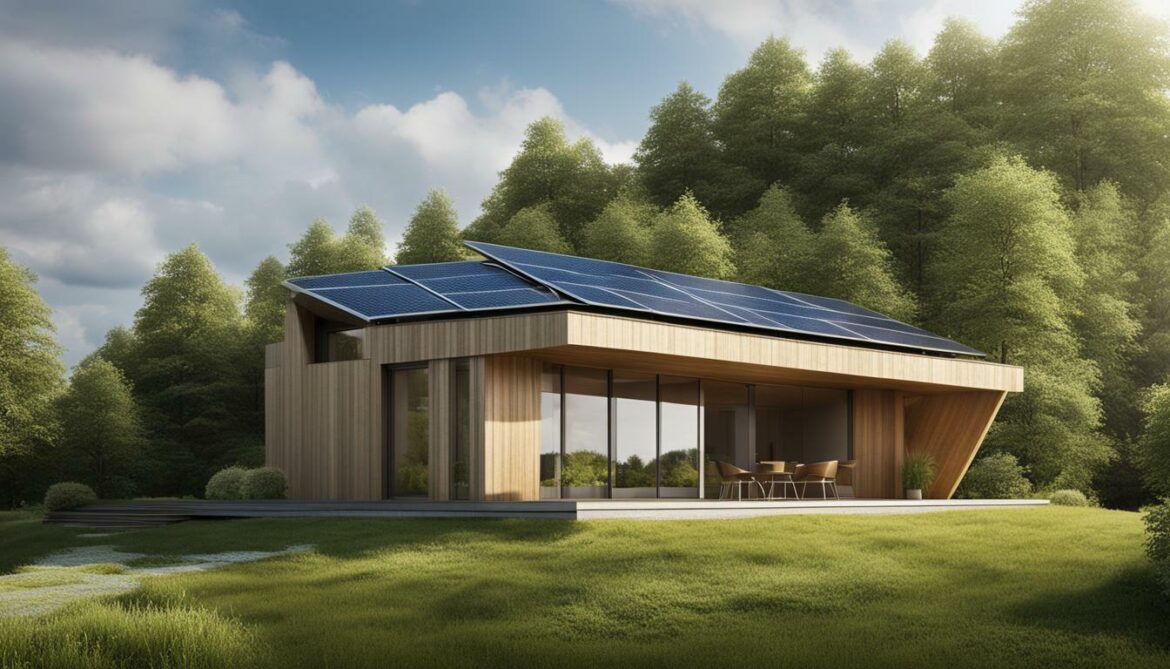
“The Hedeskoven Housing Estate in Hørsholm was designed with sustainability in mind and featured innovative solutions such as solar water heating and natural ventilation.”
Early Beginnings of Sustainable Architecture in Denmark
From the Hedeskoven Housing Estate to the Municipal Savings Bank, the early beginnings of sustainable architecture in Denmark laid the foundation for a new wave of environmentally conscious construction. As the architecture industry continues to evolve, Denmark’s legacy in this field remains a source of inspiration for architects and builders around the world.
Danish Green Building Initiatives
Denmark’s commitment to sustainable architecture is evident in its numerous green building initiatives. The country has established policies, projects, and organizations to promote environmentally conscious construction practices.
One of the most notable Danish green building initiatives is the Energy Agreement which was passed in 2012. The agreement sets a target for Denmark to be completely independent of fossil fuels by 2050 by increasing its reliance on renewable energy sources such as wind and solar power. As a result, Denmark is now a leading producer of wind turbines and has developed advanced technology in the field of wind power.
Another important initiative is the Green Building Council Denmark which promotes sustainable building methods and provides certification for eco-friendly buildings. The council has played a significant role in increasing public awareness about the benefits of green buildings and encouraging the adoption of sustainable architecture in the country.
The Danish government has also established various policies to support green building practices. One such policy is the Building Regulations which set high energy efficiency standards for new and existing buildings. The regulations require buildings to meet strict sustainability criteria, including reduced energy consumption, use of renewable energy, and environmentally friendly materials.
The Sustainable Cities Initiative is another important step in Denmark’s green building history. The initiative aims to create sustainable and livable cities by integrating sustainable architecture into urban planning and development. It promotes green spaces, efficient transportation systems, and energy-efficient buildings as key components of sustainable urban design.
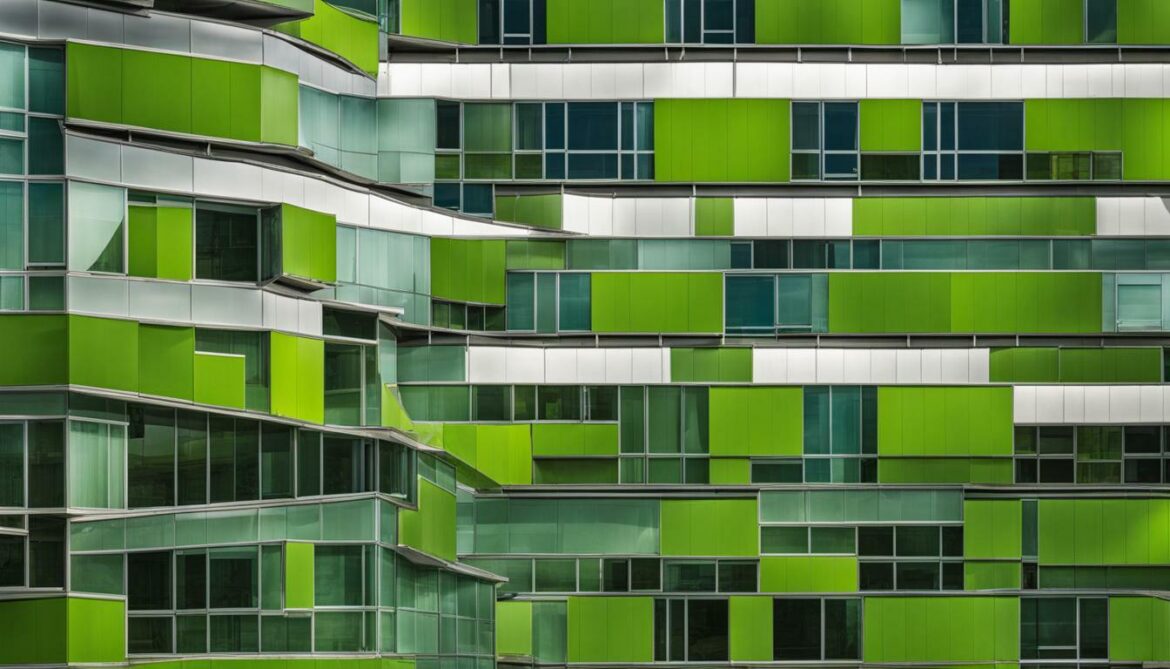
These Danish green building initiatives have not only benefited the environment but also the economy. The country’s focus on sustainable architecture has created new job opportunities and boosted the growth of renewable energy industries. Denmark’s green building initiatives serve as a model for other countries looking to adopt eco-friendly building designs and sustainable building practices.
Sustainable Building Methods in Denmark
Denmark has been at the forefront of sustainable architecture and building practices for many years. The country’s commitment to environmental conservation and sustainability has led to the development of innovative building methods that have reduced carbon emissions and energy usage.
One significant sustainable building method used in Denmark is passive solar design. This design approach involves harnessing the sun’s energy to heat and cool buildings naturally. Passive solar design features include large windows on the south-facing side of buildings, insulated walls and roofs, and radiant floor heating. This method can reduce the need for traditional heating and cooling systems, resulting in a significantly lower carbon footprint.
Another sustainable building method employed in Denmark is the use of natural materials. Buildings constructed with natural materials such as wood and stone have a lower environmental impact than those built with synthetic materials. Natural materials are renewable, non-toxic, and biodegradable, making them an eco-friendly alternative to traditional construction materials.
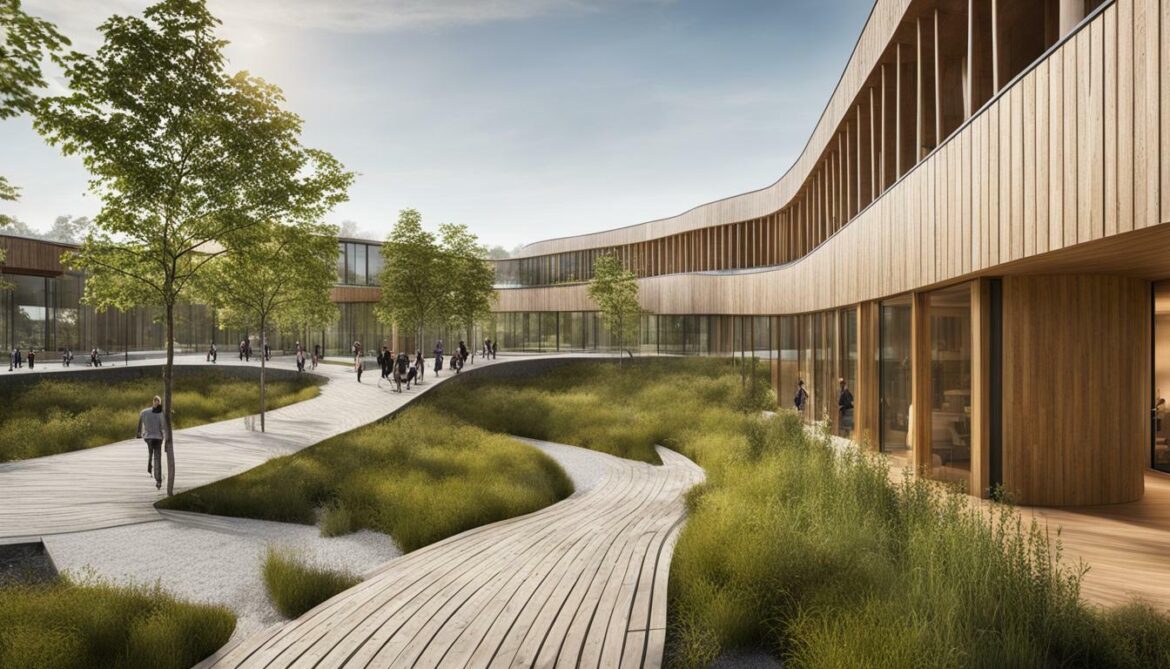
Denmark also uses a district heating system to provide warmth to homes and businesses. District heating involves capturing excess heat generated by power plants and other industrial facilities and using it to heat water, which is then distributed throughout a network of pipes to homes and buildings. This system is incredibly efficient and can reduce energy consumption and costs significantly.
Overall, sustainable building methods in Denmark prioritize environmental conservation and energy efficiency. By implementing innovative approaches, the country has reduced its carbon footprint and become a global leader in sustainable architecture and construction.
Current Trends in Danish Green Construction Practices
In recent years, green building practices in Danish history have continued to evolve and advance, with a focus on creating sustainable, energy-efficient, and environmentally friendly buildings. One of the latest trends is the use of green roofs and walls, which help to reduce heat loss, improve insulation, and promote biodiversity in urban areas.
Another trend is the use of renewable energy sources such as solar panels and geothermal heating systems, which help to reduce dependence on traditional energy sources and lower greenhouse gas emissions. Innovations in smart technology and automation have also played a significant role in green construction practices, allowing for more efficient energy management, lighting, and ventilation systems.
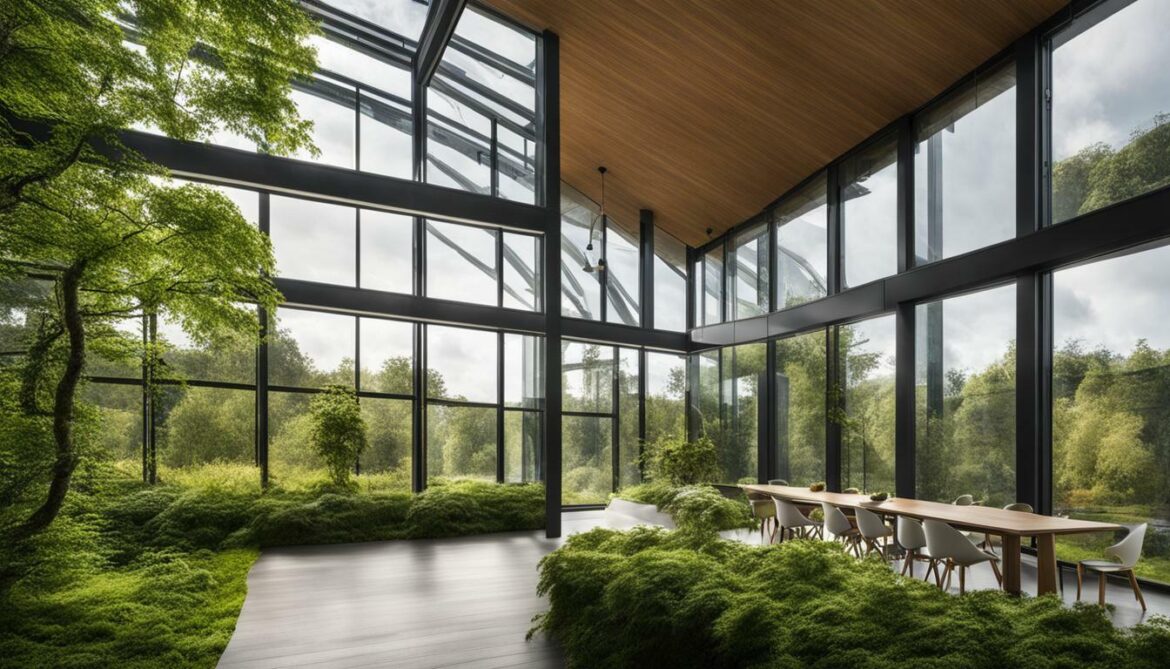
One of the most significant current trends in Danish green construction practices is the focus on circular economy principles. This involves designing buildings with the intention of reducing waste and preserving resources by incorporating recycled or upcycled materials and creating a closed-loop system for water usage.
The use of sustainable and non-toxic building materials such as wood, natural stone, and low-VOC paints and adhesives is also becoming increasingly popular in Danish green building practices. These materials not only have a lower impact on the environment but also create healthier and more comfortable indoor environments for occupants.
Overall, Danish green construction practices continue to push the boundaries of sustainable architecture and design. As the world increasingly embraces the importance of eco-friendly building practices, the innovations and advancements in Danish green building will undoubtedly continue to lead the way.
Impact of Denmark’s Green Building History
Denmark’s green building history has had a significant impact on sustainable architecture across the globe. The country’s commitment to eco-friendly building design has spurred innovation in the construction industry, inspiring new green construction practices and techniques worldwide.
In particular, Danish sustainable architecture has proven to be highly energy-efficient, utilizing innovative techniques to reduce energy consumption and minimize waste. Through the use of natural lighting and ventilation, as well as the implementation of energy-efficient heating and cooling systems, Danish buildings have set a new standard for sustainable construction practices.
Moreover, the country’s proactive green building initiatives, such as the Danish Green Building Council, have played a key role in promoting sustainable architecture. The council has led the way in developing green building standards and certifications, ensuring that sustainability is a top priority in the construction industry.
As the world continues to focus on sustainability, Denmark’s green building history will continue to have a lasting impact. The country’s eco-friendly building design and sustainable building methods serve as a valuable lesson and inspiration for the future of construction practices. By incorporating these sustainable practices into construction projects, we can create more energy-efficient, environmentally conscious buildings that benefit both our communities and the planet as a whole.
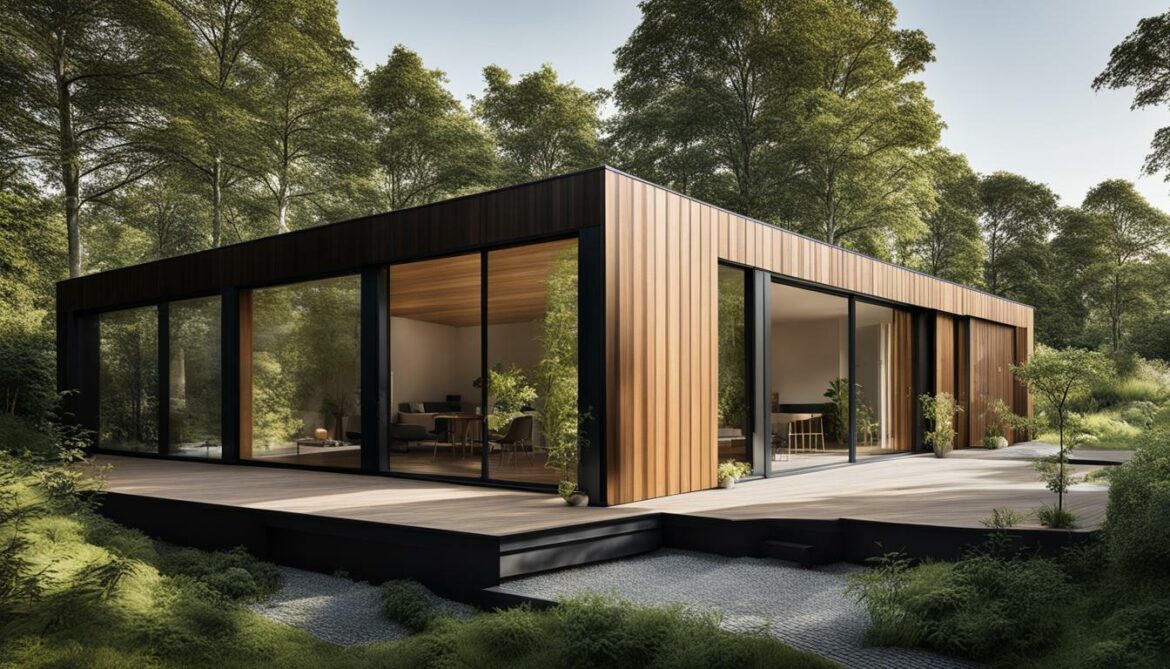
Denmark’s green building history has positioned the country as a pioneer in sustainable architecture. The combination of historical environmental architecture, innovative building methods, and proactive green building initiatives has contributed to Denmark’s reputation as a leader in eco-friendly design.
As the world becomes increasingly focused on sustainability, Denmark’s experience serves as a valuable example and inspiration for the future of green construction practices. The country’s commitment to sustainable architecture has not only benefited the environment, but also the economy, with the creation of new jobs and industries.
In conclusion, Denmark’s green building history has made a significant impact on the architecture and construction industry. The country’s sustainable practices have influenced global trends and shaped the mindset towards eco-friendly building design. We can only hope that other countries will follow Denmark’s lead and adopt similar practices to create a more sustainable future.
FAQ
What is green building?
Green building is an approach to construction and design that prioritizes sustainability and environmental friendliness. It involves using eco-friendly materials, implementing energy-efficient systems, and reducing the building’s overall environmental impact.
How did Denmark become a pioneer in sustainable architecture?
Denmark became a pioneer in sustainable architecture due to its long history of environmental consciousness and commitment to sustainable practices. The country has consistently prioritized green building initiatives and has implemented policies, projects, and organizations that promote eco-friendly building design.
What are some green construction practices in Denmark?
Some green construction practices in Denmark include the use of renewable energy sources, energy-efficient building insulation, rainwater harvesting systems, and the integration of natural lighting and ventilation.
What are Danish green building initiatives?
Danish green building initiatives are projects, policies, and organizations dedicated to promoting sustainable architecture and eco-friendly building design. These initiatives aim to reduce energy consumption, minimize waste, and create healthier and more environmentally conscious buildings.
What are the sustainable building methods employed in Denmark?
Denmark employs various sustainable building methods, including passive solar design, green roofs, geothermal heating and cooling systems, and the use of locally sourced and recycled materials.
What are the current trends in Danish green construction practices?
Current trends in Danish green construction practices include the integration of smart technologies for energy management, the incorporation of nature-inspired design elements, and the focus on creating flexible and adaptable spaces that support sustainable living and working environments.
How has Denmark’s green building history impacted the architecture and construction industry?
Denmark’s green building history has had a significant impact on the architecture and construction industry worldwide. Its sustainable practices have inspired and influenced global trends, leading to an increased focus on eco-friendly building design and the prioritization of sustainability in construction projects around the world.






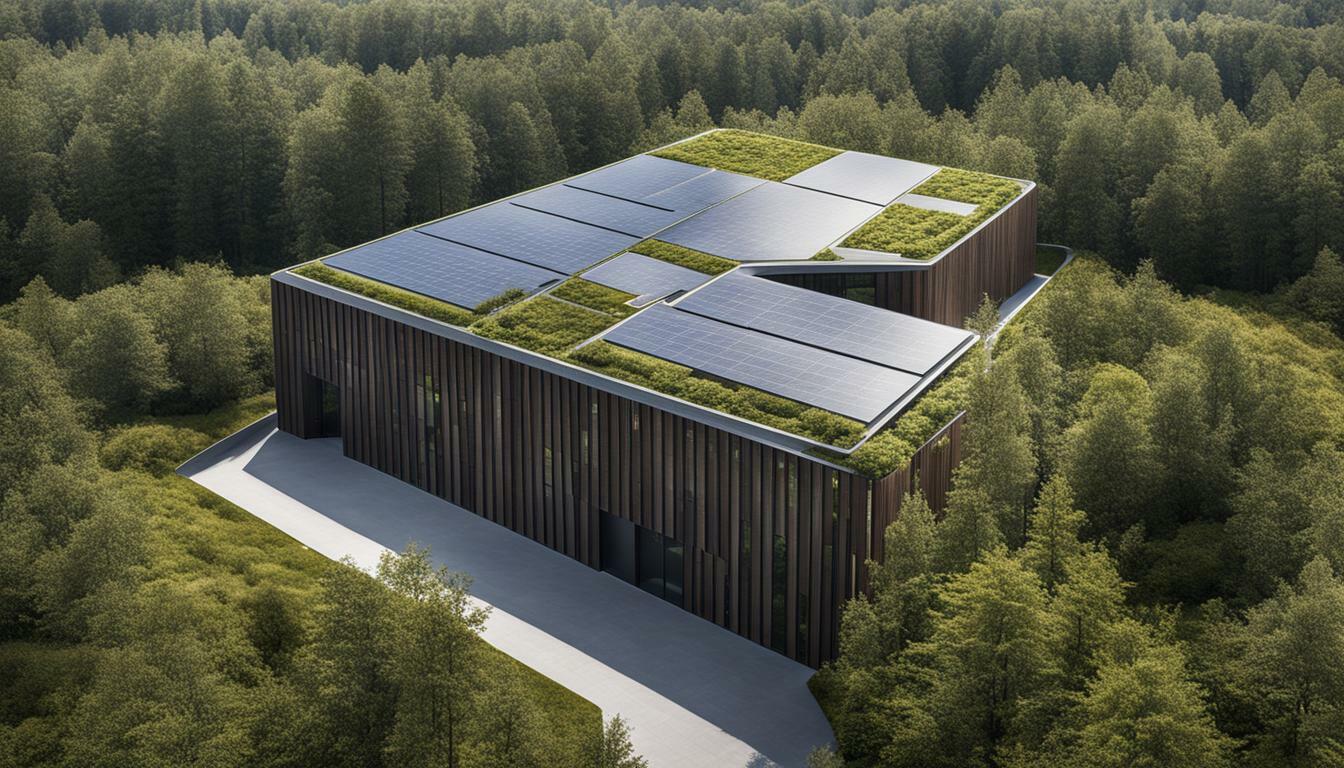
















Post comments (0)